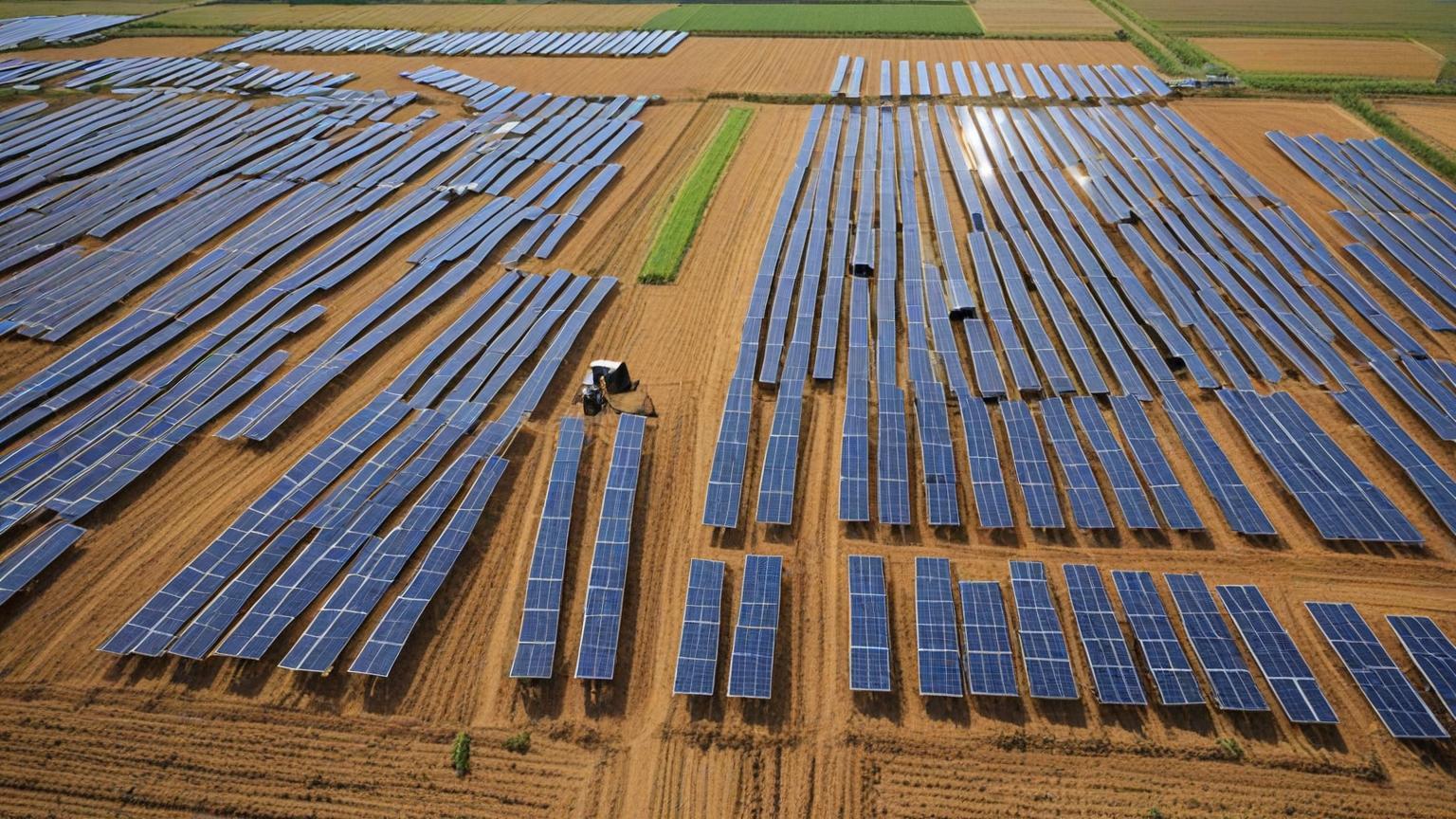In the rolling fields of rural America, an innovative agricultural revolution is quietly taking root. Farmers are now embracing agrivoltaics, a burgeoning practice that combines solar power with traditional farming, paving the way for a sustainable future that harmonizes energy production with agriculture.
Agrivoltaics, the integration of solar panels on agricultural land, offers a promising solution to some of the most pressing issues facing modern farming and renewable energy. By optimizing the use of land for both solar energy and crop production, agrivoltaics can increase land productivity while reducing the carbon footprint of farming.
This dual-use approach is transforming the way we think about land management. The concept is simple: install solar panels at a height that allows plants to thrive beneath them. This dynamic synergy provides shade that can reduce stress on crops during sweltering heatwaves, while the solar panels generate clean energy. The result is a win-win scenario that supports farmers' livelihoods and contributes to the global fight against climate change.
Innovative partnerships between agricultural experts and renewable energy companies are crucial to the success of agrivoltaics. These collaborations are essential for designing systems that maximize both energy and agricultural yields. By integrating advanced solar tracking technology, which ensures panels efficiently capture sunlight throughout the day, agrivoltaic systems can provide consistent and reliable energy generation.
The adoption of agrivoltaics is starting to gain momentum, particularly in regions where agriculture drives the local economy and sunlight is abundant. One such example is California's Central Valley, where pilot projects are demonstrating the potential for increased crop yields and energy savings. In some cases, agrivoltaics have been shown to increase plant productivity by offering natural shading and reducing soil moisture loss.
However, the path to widespread adoption is not without obstacles. Initial costs for setting up agrivoltaic systems can be significant, and there is a learning curve for farmers transitioning to this dual-use model. Incentive programs and government support can play a critical role in overcoming these barriers. Policies that encourage renewable energy integration in agriculture, along with subsidies for initial investments, could spur further growth in this field.
Public perception and community involvement are also vital components of successful agrivoltaic implementation. Local communities must be engaged in the process, as agrivoltaic projects can alter landscapes and affect land usage patterns. By involving community stakeholders in decision-making and prioritizing transparency, agrivoltaic initiatives can garner the support needed for sustainable development.
Environmental and economic benefits aside, agrivoltaics also holds the promise of fostering biodiversity. The varied microclimates created by solar panel installations can attract pollinators and promote habitat diversity. Moreover, agrivoltaic systems encourage soil conservation practices, enhancing the resilience of the ecosystems they inhabit.
Education and awareness are pivotal as we propel agrivoltaics into the mainstream. Academic institutions and research centers are vital in innovating best practices, while extension services can equip farmers with the knowledge and skills needed to adapt. Showcasing success stories and providing training can empower farmers to embark on this sustainable journey.
As we face an uncertain climate future, the urgency to adopt smart, sustainable practices in both energy and agriculture cannot be overstated. Agrivoltaics stands at the crossroads of these critical fields, offering a pathway to resilience, sustainability, and prosperity.
The importance of responsible land use grows clearer each day, and agrivoltaics offers an exciting vista of hope. As more farmland sprouts solar panels, the horizon is bright with the promise of innovation, unity, and a greener tomorrow.
Harnessing the sun: The future of agrivoltaics in sustainable farming




